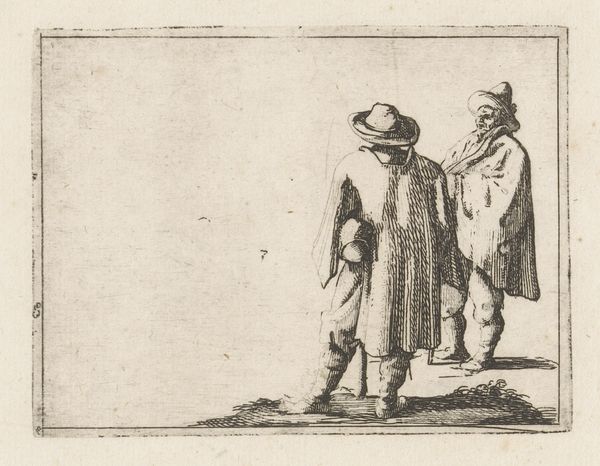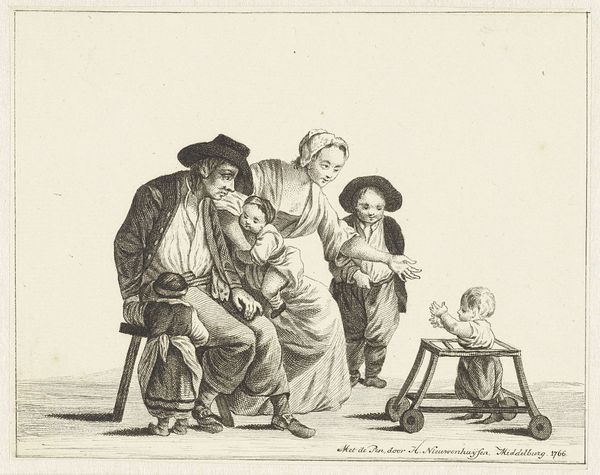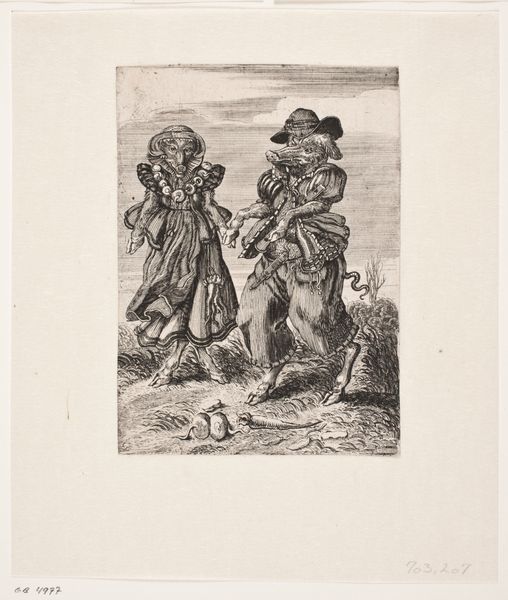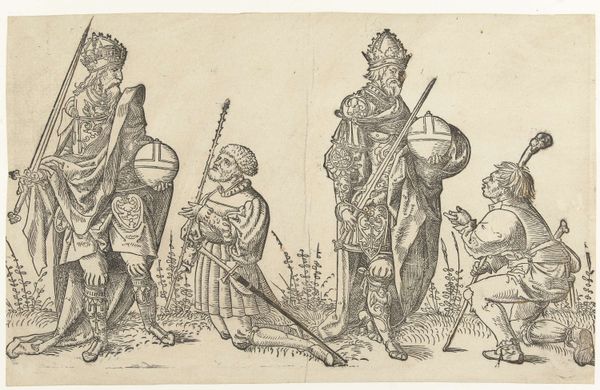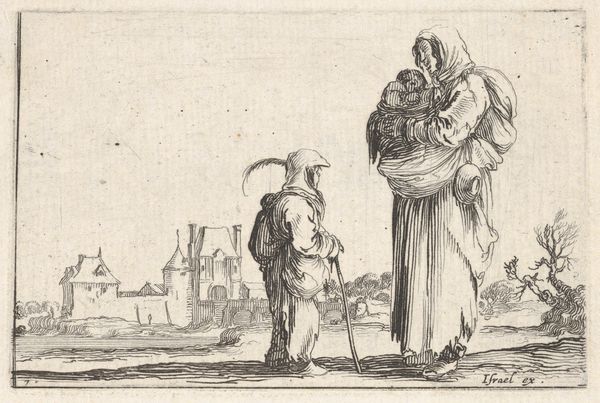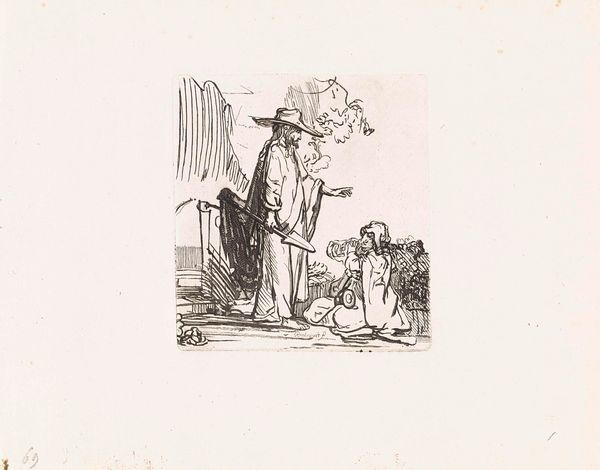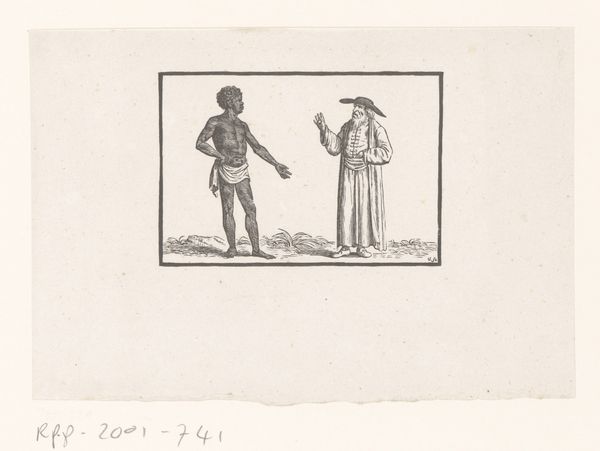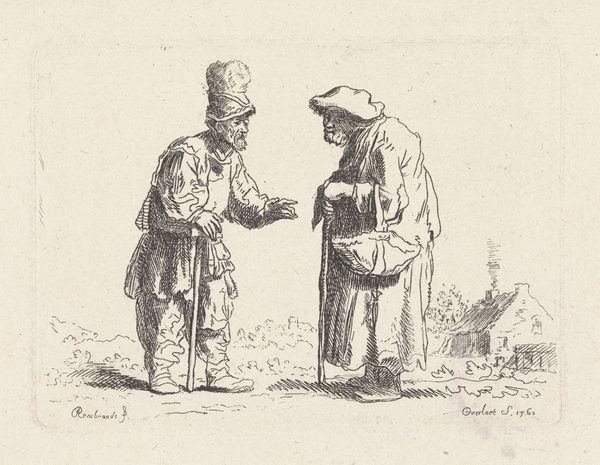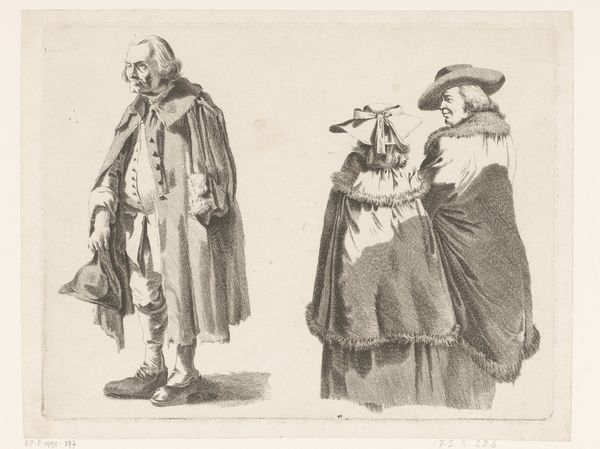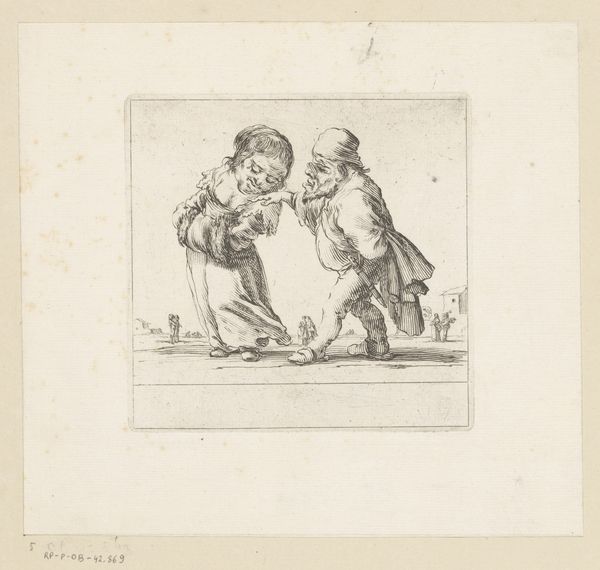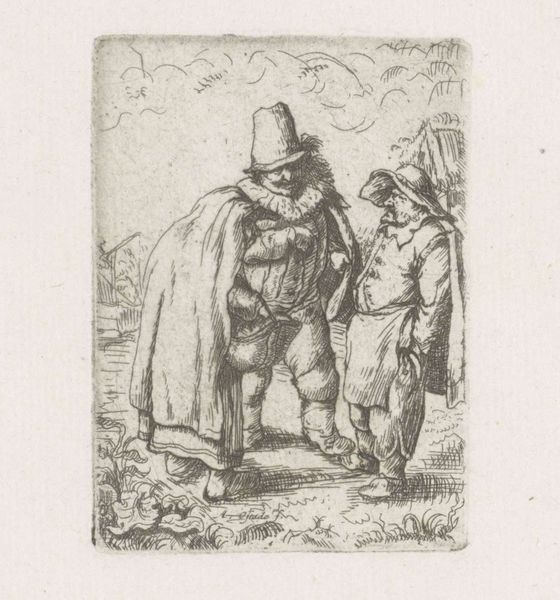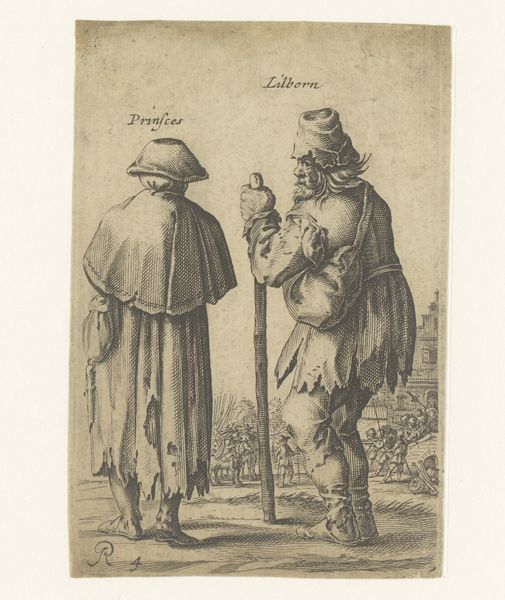
drawing, paper, engraving
#
portrait
#
drawing
#
figuration
#
paper
#
group-portraits
#
line
#
genre-painting
#
engraving
Dimensions: height 72 mm, width 92 mm
Copyright: Rijks Museum: Open Domain
Curator: Here we have "Man, Woman, and Child," a drawing and engraving by Anthonie Willem Hendrik Nolthenius de Man, likely made sometime between 1803 and 1842. Editor: My first impression is stark: a vignette frozen in time. The etching's limited tonal range focuses your attention on the crisp outlines and rather severe expressions. Curator: Indeed. What interests me immediately is how the etching technique, the labor, and the potential reproducibility shape our understanding. Engravings like this weren't precious singular objects but reproducible images destined for wider circulation. They served a very different social function. Editor: That may be so, but notice the very conscious deployment of line and shadow. The faces are modeled with fine hatching, giving them a sculptural presence despite the minimal detail. Note too how their clothes contribute to this: how their folds catch the light. The artist has used line masterfully. Curator: The clothing and tools displayed denote class distinctions, signifying a social stratum perhaps aspiring to upward mobility. The small boy's posture indicates what kind of skills, that are tied to tools like the cane and the ball, are expected and desired. Editor: Perhaps. Or perhaps it’s simply documenting a scene of leisure? The interplay of dark and light directs our eyes, and those contrasts give the composition depth and a sense of contained drama, even if the subject seems mundane on the surface. Curator: Mundane or telling, what is being depicted suggests an artisan class or perhaps petty bourgeois family taking recreation outside of working hours. This would speak to social hierarchies of the period, but also the role that artistic techniques had for its documentation and perpetuation. Editor: Fair enough. It does draw you in with its strange sense of scale; the subjects seem dwarfed by their own clothing, creating an almost unsettling mood. I notice that they do occupy an indeterminate location which lends a unique and timeless aura to the grouping. Curator: I think we can appreciate "Man, Woman and Child" as a reflection on material life of its period and how it was portrayed. Editor: And also celebrate the undeniable formal ingenuity of its construction. The artist had skill in managing our view through the lens of line.
Comments
No comments
Be the first to comment and join the conversation on the ultimate creative platform.
